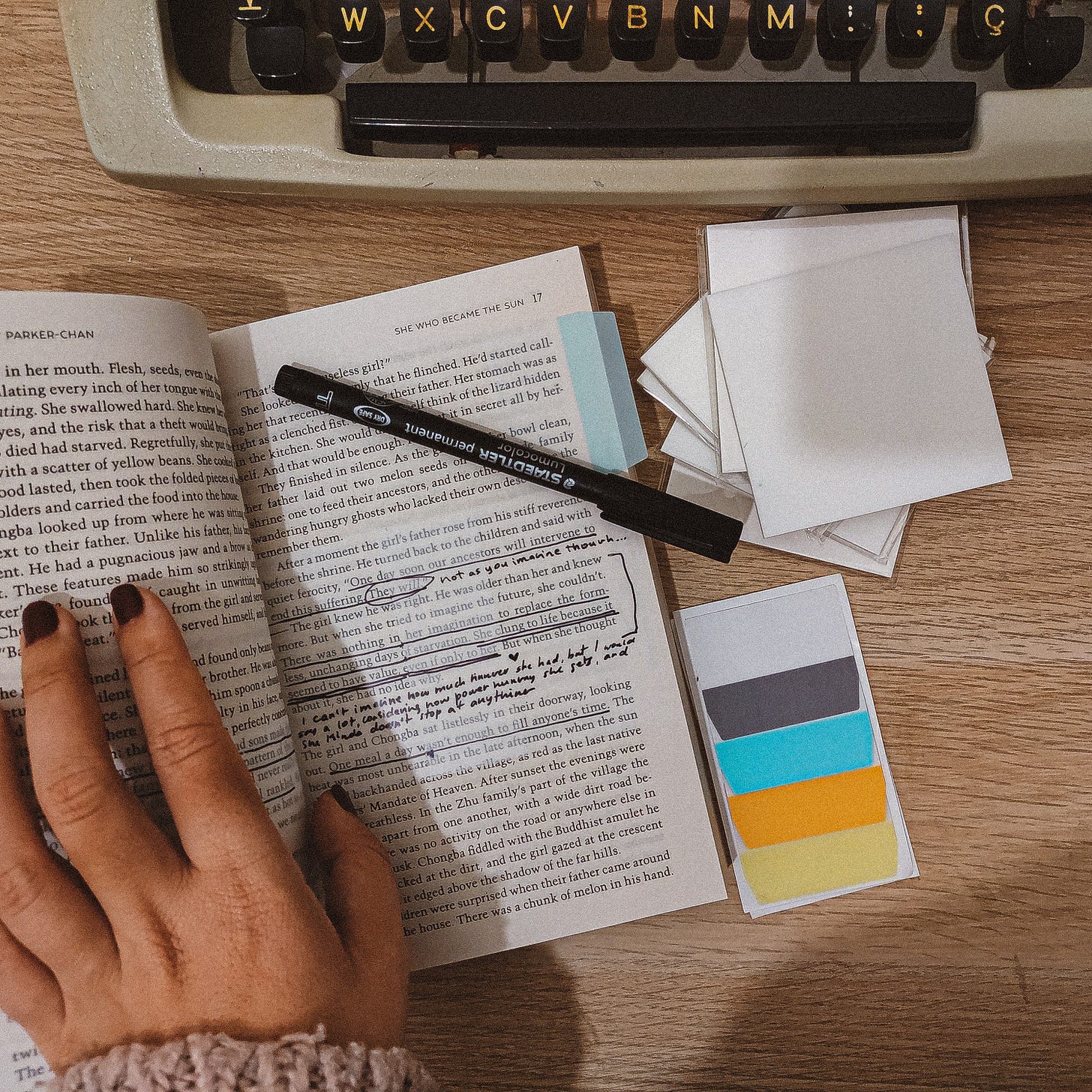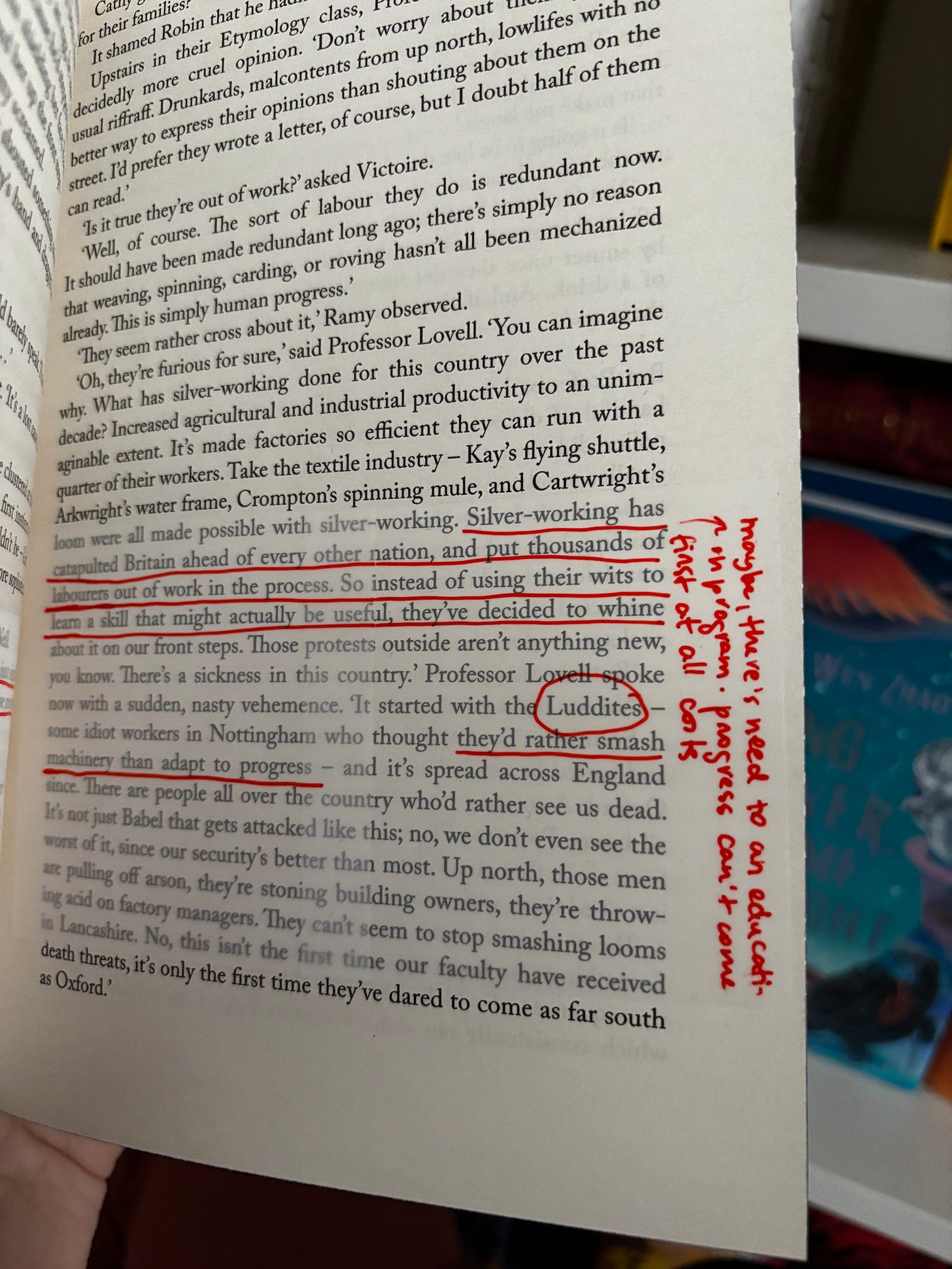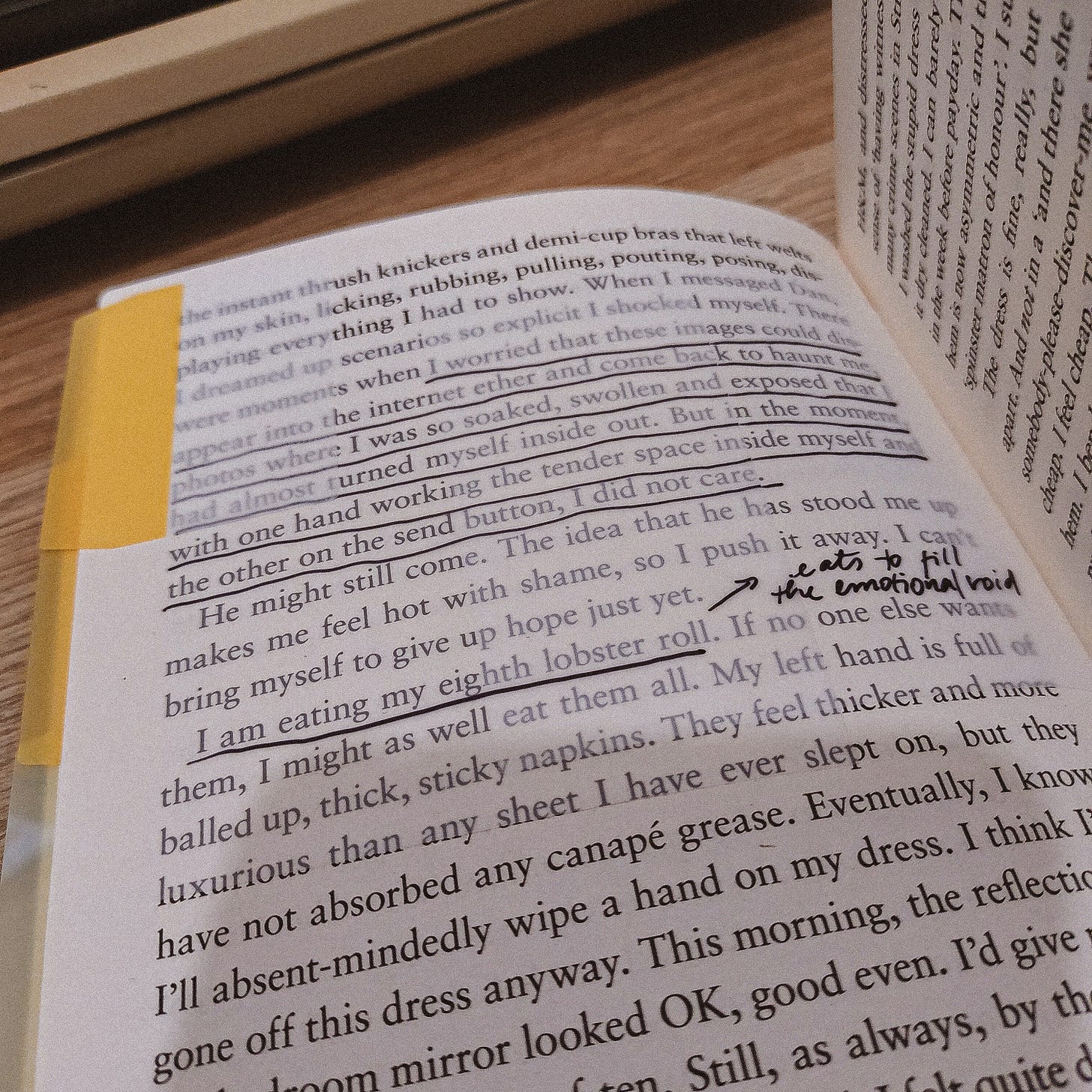On reading closely (and talking back to books)
By someone who has been known to argue with a page margin or two.

Dear reader,
In 2022, I wrote an article about selling annotated books and the reasons why people write in their books in the first place. At the time, I didn’t underline or scribble much, although I remember doing so as a teenager — always in pencil and with great reverence, as if the book itself were sacred and there was no room for my own thoughts. But somewhere along the way, I realised what I had been missing: the chance to engage with the text and leave my mark as a reader.
So I bought a pack of transparent sticky notes — the kind that cling to the page without covering the text — and began underlining and jotting in the margins with a permanent marker. There were shaky lines, clumsy exclamation marks, arrows darting across paragraphs and bursts of commentary. Suddenly, other people’s words became springboards for my own: reflections, epiphanies, little winks to myself. It reminded me that I was not only reading, but also thinking, feeling, questioning.
At first, I opted for Post-it notes instead of writing directly on the page — a sort of temporary arrangement, a compromise. But now I’ve grown to love it. Reading, I’ve found, can be an assembly process, a layering of additions. Each sticky note is a soft interruption, a delicate yet intentional alteration that I can choose to undo at any time. And a reminder that a book is alive, and we meet it differently each time.
Ultimately, annotating is how I stop a book from closing in on itself. It’s a way of fixing the moment of reading, leaving a trace of who I was, what touched me, what I didn’t understand. Maybe that’s what fascinates me most: that even while reading, I can write. That even when alone, I can be in conversation — with the text, with myself.
Because here’s the thing: there’s a particular kind of intimacy that happens when you read closely. Not scrolling-while-podcast-listening reading. Not skimming on the train, reading. No — I mean the kind where you reread the same sentence three times because it knocks the wind out of you. The kind where you pause and write “!!!” in the margins, not because it’s smart, but because it’s true.
It took me years to realise I’m not a quiet reader. I may look polite — tucked under a blanket, cup of tea in hand — but my inner monologue is unhinged. I sigh. I scoff. I whisper “as if” when a character says something ridiculous. I mutter “no, no, no” when a plot twist feels inevitable and devastating. I argue with authors. I scribble: bold of you to assume this, are we serious right now?
Reading, for me, is not a passive act. It’s participation. It’s a relationship. A sentence wouldn’t sit right, and instead of moving on, I’d write “hmm” in the margin. (A deceptively powerful annotation — it can mean anything from “brilliant” to “what were you thinking?”)
Over time, it has become more than a habit. It’s a method. Maybe even a manifesto. Close reading, to me, is not about being academic or analytical. It’s about presence. It’s about attention. It’s about noticing how something is said, not just what. And it’s also about listening to the rhythm of a sentence, the texture of its silence. Sometimes, the space between two lines is louder than the lines themselves.
Since becoming a mother, I read in fragments — a paragraph here, a line there, with a baby napping on my chest or babbling beside me. The tempo has changed, but not the closeness. If anything, I’m more attuned to the small things: a metaphor that brushes against my life, a phrase that lands with the weight of a memory. Maybe it’s the lack of time. Maybe it’s the new depth.
I’ve also noticed I’m less patient with books that talk over me. You know the type; the ones that explain the world rather than explore it. My margin notes get spikier with those. And honestly? I think that’s healthy. A good book doesn’t need to be agreeable. But it should be generous enough to welcome disagreement, to make space for your voice alongside the author’s.
So go ahead. Talk back to your books. Annotate wildly. Ask questions. Disagree. Praise. Reread. Reconsider. Let reading be messy, intimate, and transformative. That’s where the magic is — not just in what we read, but in how we meet it.
If you enjoyed this issue, don’t forget to spread the word — the more, the merrier! I’d also love to hear your thoughts, so please don’t hesitate to reach out. It helps keep this community growing and thriving.
If you’d like to support my writing, here are a few lovely ways to do it (thank you so, so much):






